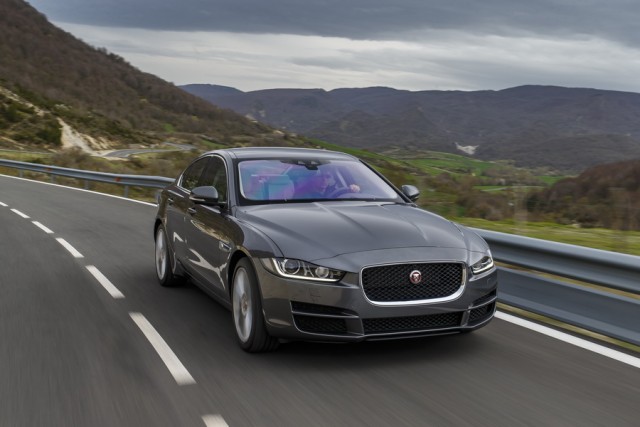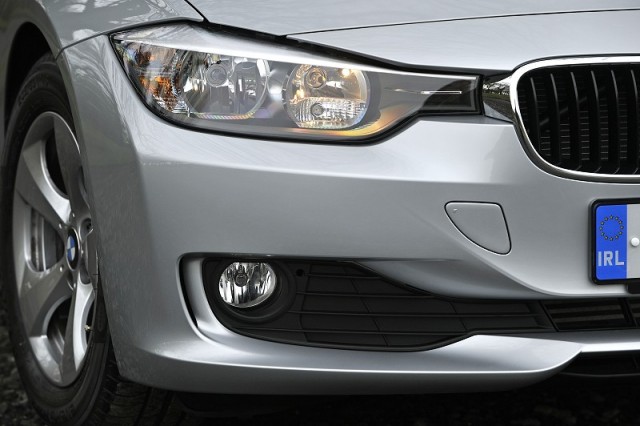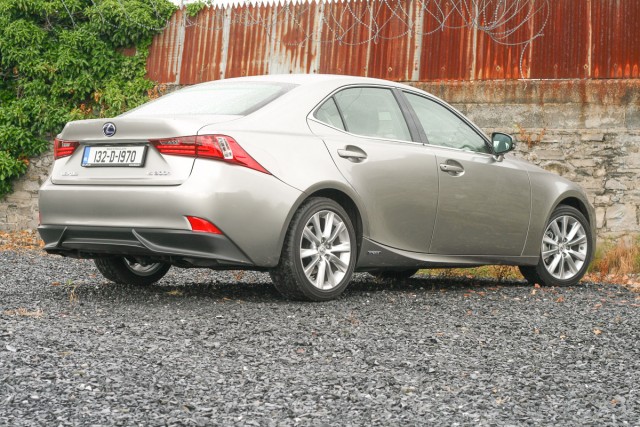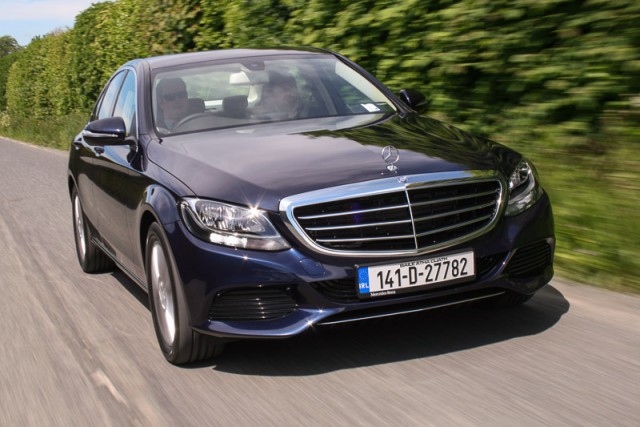Overall rating: 4/5
Jaguar's XE has a tough fight on its hands in the face of excellent competition from BMW, Audi, Mercedes-Benz, Lexus and Volvo, but the new compact saloon eradicates any memory of the underwhelming old X-Type - this Jag is a wonderful car.


In the metal 4.5/5
It's another Ian Callum-led design delight, the Jaguar XE, as it's taut and lean without being dull. Cynics might note vague hints of BMW or Audi styling about the rear end, but strip it of its big cat badges and from the front or side there would be no doubt whatsoever of its lineage. The cab-rearward stance is loosely evocative of the F-Type Coupe, while there's going to be a 'family theme' to the styling of the marque in the years ahead, in order to get the Jaguar brand better known worldwide. So XE, XF and XJ will all look broadly similar, which is no bad thing when they end up as handsome as this.
The interior is great too, not least by the new InControl infotainment system that finally drags Jaguar's on-board software into the 21st century. It's mastered via an eight-inch touchscreen that provides a focal point in an attractive dashboard, which sits beneath the XE's signature design feature: the Riva Hoop. It sweeps from front door top to front door top underneath the windscreen and it immediately makes you aware you're not in anything Teutonic, here referencing the Jaguar XJ, which was the first Jag to use it.

Indeed, the touch-points, visuals and fit of everything all exude quality, but there are one or two minor issues inside and out that mean we can't award the XE full marks here: it can look under-wheeled at the rear even on optional 18-inch alloys, so the 17s fitted as standard to entry-level models will probably look like shopping trolley castors, lost in the arches; in this manual model, the baggy leather gear gaiter is reminiscent of the 1980s; in bright sunshine, you'll never hope to see the little light just behind the rotary gear selector that tells you which driving mode you're in; rear-seat space is pretty cramped, even compared to other rear-drive rivals; and the red/green colour scheme used for the optional laser head-up display isn't the most pleasing on the eye. These are all, of course, quite minor gripes. In general, the XE has oodles of showroom appeal.
Driving it 4/5
We drove one of the new Ingenium diesel engines, which - for the Jaguar XE - is a 2.0-litre four-cylinder turbocharged lump. It comes in two power trims, of either 163hp/380Nm or 180hp/430Nm, the first being a tax-break special as it means it's in Band A2 instead of A3 for VRT and road tax thanks to emissions of 99g/km. It can also return consumption of 75mpg (3.8 litres/100km) in manual format. Only diesel XEs get a six-speed manual as standard, with an eight-speed ZF automatic transmission an option; this self-shifter is standard fit on the petrol models, which are made up of two output variants of a 2.0-litre four-cylinder turbo (200- and 240hp) and the range-topping XE S V6, delivering a mega 340hp from a supercharged engine seen in the F-Type.

There are also three types of suspension, two of which are passive: Comfort, as tested here, fitted to sub-R-Sport models; and the R-Sport's firmer set-up. Adaptive damping is an option, except on the S where it's standard fit. And, having tried the 180hp diesel in both Comfort and adaptive formats, and both transmissions, here's our advice: buy an automatic XE with the top-line suspension. It's not that the Comfort manual is a bad car but there are two traits in its dynamic make-up that slightly unsettle the driver. The first is a strange feeling of the rear axle 'corkscrewing' during faster cornering. This is probably exacerbated by the standard-fit Torque Vectoring, which brakes individual inner wheels to reduce understeer, but it's not a natural feeling and it forces you to reduce speed in the corners when pressing on. This isn't helped by weirdly inconsistent steering in the more relaxed mode, which is inert for the first few degrees of lock and then rabidly direct almost instantly afterwards, requiring the unfamiliar driver to make several adjustments to steering input in any given bend. This is odd; because Jaguar's electrical power steering system in other models is one of the better we've tried.
These two concerns only stand out because, otherwise, the XE is excellent. The Torque Vectoring does its job at eliminating understeer, with the Jag blessed with a neutral to rear-led chassis, while the ride is sublime thanks to superb damping and the absence of wind, tyre or engine noise. Which brings us to the Ingenium, which is surely the star of the show for the diesel XEs. It is a remarkable engine, keen to rev, super-smooth at all times and even sounding clean and rattle-free when homing in on 4,500rpm. Its huge 430Nm of torque makes the XE 2.0d 180 genuinely rapid and the general refinement of its performance renders a BMW 320d coarse in comparison. It also makes the 240hp petrol version of the XE, which we also drove and thoroughly liked, an irrelevance, because that car is not markedly quicker than the Ingenium version yet can only just scrape together little more than half the diesel's economy - 37.7mpg (7.5 litres/100km) playing 67.3mpg (4.2 litres/100km) is embarrassing, as is 179g/km CO2 (Band E, €750 per annum) instead of 109g/km.

But here's why we'd advocate auto for the diesel - if you're lazy with the stick in the manual, you'll encounter turbo lag below 1,500rpm. The eight-speed ZF suffers from no such problem and somehow, despite Jaguar targeting a younger clientele, an auto still seems like the correct choice for a Jag. That it's also a peach of a unit, with rapid responses and well-judged ratios, only serves to strengthen our conviction on this score.
What you get for your money 4/5
Trim lines are standardised globally, except across the water in the Jaguar's homeland of the UK - where entry-level is called SE, rather than Pure. Irish specs are yet to be 100 per cent confirmed but the line-up is expected to be Pure, Prestige, then into a two-branch split of R-Sport and Portfolio, before topping out with S (reserved for the bonkers 3.0-litre supercharged petrol V6 only). Most XEs will get cruise control, satnav, climate control, DAB digital radio and at least 17-inch alloys as standard, with leather on the higher models. Optional equipment includes the aforementioned head-up display, Adaptive Cruise Control, a Meridian premium sound system and Jaguar's All-Surface Progress Control, which promises traction even in snow and ice. Granted, it can therefore be specified to a robust price, but it's no worse than the competition in this segment and the XE will feel worth every cent of what you paid for it/financed it for, so we have to say we expect it to be good value for money, with prices likely to start at just under €40,000.

Summary
The Jaguar XE is a car to make the Germans seriously worried. It can drive in as entertaining a manner as a BMW 3 Series, it has the sort of exceptional ride quality possessed by the latest Mercedes-Benz C-Class and the interior currently beats the ageing Audi A4's. Jaguar had a stab at small premium cars before with the X-Type, never quite convincing as a credible alternative to the established marques. The XE couldn't be more different - specify it correctly and this is the new class leader in its segment. It's a truly brilliant compact saloon and its diesel engine is magnificent.












































